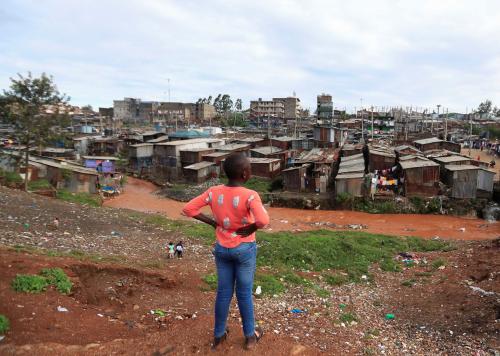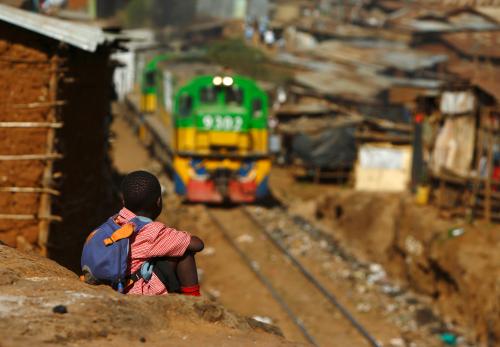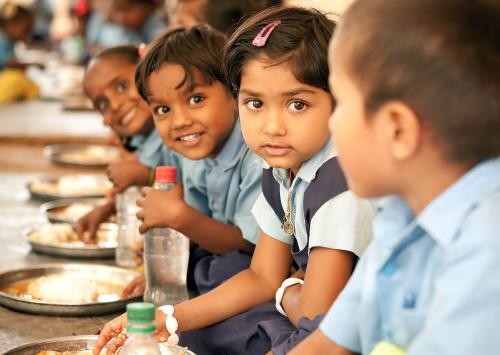For nearly six months, journalists, pundits, and researchers have explored the ongoing and expected impacts of the COVID-19 pandemic through several core lenses: public health, mortality, economic prospects, and, most recently, food security. These domains—which collectively constitute the first three Sustainable Development Goals—are the primary means by which the “temperature” of humanity can be quickly benchmarked.
But as efforts to beat back and flatten the curve of infections now begin to take hold, policymakers would be well advised to start looking beyond the current crisis management phase to the medium term. With some 55 million more people now living in extreme poverty than on January 1 2020, how can poorer developing countries return to—and accelerate—their development trajectories?
Part of the solution will need to come from boosting levels of education attainment—a core component of the broader concept of “human capital,” Significant and ongoing investments in human capital development can account for as much as 30 percent of the variance in GDP between countries; more specifically, every additional year of schooling boosts individual income by some 8 percent.
Nevertheless, for many countries where access to inclusive and equitable quality education remains a challenge, the prospect of unlocking the economic potential of an educational dividend in the aftermath of the COVID-19 outbreak may seem elusive. To help policymakers and development practitioners get a better handle on precisely where the opportunities and the risks lie at a granular level, World Data Lab has created a new subnational education modeling methodology that now-casts and forecasts education attainment at the subnational level and disaggregates the results by age and gender. The new method—which utilizes harmonized subnational survey education data from IPUMS as well as population models from the International Institute of Applied Systems Analysis (IIASA) to create a convergence model that estimates the growth rate of the number of persons by education level—has been piloted in two East African countries (Kenya and Tanzania) and visualized via a webtool. Several salient points emerge from the data.
First, at the aggregate national level, the new dataset confirms the promise of Kenya’s potential “education dividend,” first proposed nearly a decade ago. In short, the percentage of people with no education in that country is projected to nearly halve by 2030, assuming pre-COVID education and demographic trends continue. Moreover, while the number of people with a primary education is projected to increase by 25 percent from 13 million to 16 million, the biggest gains will be in the number of people who have completed secondary and/or tertiary education. Both groups are expected to increase by some 60 percent over the next decade to a combined total of 19 million.
Figure 1. By 2030, almost everyone will have completed primary school in Kenya, except in the North
Subnational heatmap showing the percentage of Kenya’s population that will have completed at least a primary education by 2030

Source: World Data Lab
Nevertheless, Kenya remains vulnerable at the subnational level. Our model suggests that by 2030, well-known pockets of poverty—such as Turkana, Wajir, and Mandera—will still struggle with low primary education attainment rates, while other areas—such as Fafi, Garissa, Ijara, Lagdera, Pokot, and Samburu—if left unaddressed, can also expect that some 40-60 percent of their populations will never complete a level of education.
Looking at the Tanzania data, our model expects that roughly 6 out of 7 people will have completed some form of education by 2030, although most of these gains over the next decade will be at the primary education level. At the subnational level, pockets of weakness in educational achievement levels in Tanzania are generally fewer and less severe than in Kenya. In general, the percentage of people who have not completed any level of education is around 15-25 percent; the area with the highest percentage is Ngorongoro at 33 percent. On the other hand—and in contrast to Kenya—secondary and tertiary educational achievement is weaker. In Kenya, 38 percent of those aged 15 and over have a secondary and/or a tertiary education. In Tanzania, this number is only 8 percent but this is expected to increase to 12 percent by the end of 2030.
Finally, from a gender perspective, as in Kenya, some 55 percent of people who have not completed any level of education are women and this share is forecasted to stay the same over the next decade. Moreover, of those who have or will complete a course of study, near parity between the genders exists at the primary level (49 percent are women) while at the secondary and tertiary levels, the share decreases to 46 percent and 40 percent respectively.
Figure 2. In Tanzania, education will improve moderately and more evenly than in Kenya
Subnational heatmap showing the percentage of Tanzania’s population expected to have completed at least a primary education by 2030
 Source: World Data Lab
Source: World Data Lab
If Kenya and Tanzania can be taken as reasonable proxies for the East African region, the good news for policymakers and development practitioners is that the pre-COVID-19 roadmap and trajectory for concrete educational attainment gains in Africa was generally quite strong. Amid the new landscape, the challenge therefore remains how to return to that trajectory despite the constraints related to social distancing and weak technological infrastructure to support home learning. If nothing is done, it is very likely that vulnerable populations will most certainly see their prospects decline in the post-COVID-19 era. As the dust of the first wave of lockdown measures begins to settle in countries around the world, those looking for concrete options for restoring economic growth over the next decade should remember the profound transformative power that education plays in the personal and economic lives of everyone. If there ever was a time, now is indeed the right moment to begin gathering the political and financial resources necessary to convert financial capital into human capital.
The Brookings Institution is committed to quality, independence, and impact.
We are supported by a diverse array of funders. In line with our values and policies, each Brookings publication represents the sole views of its author(s).









Commentary
Learning in East Africa: Where are children advancing
May 28, 2020